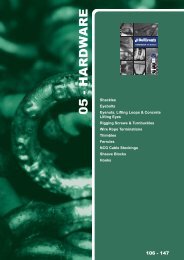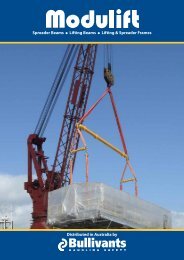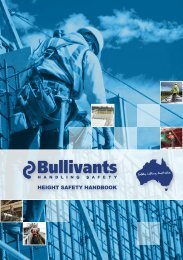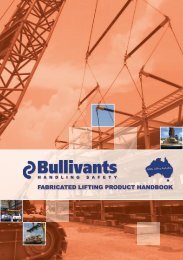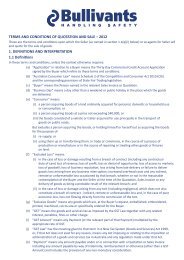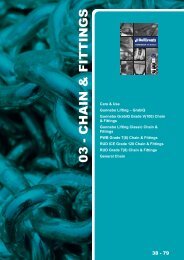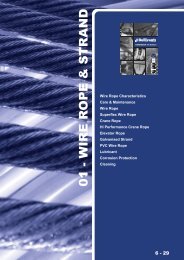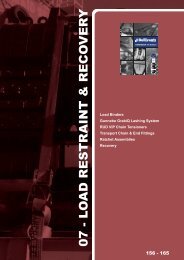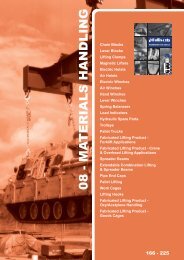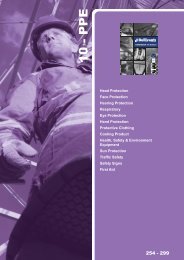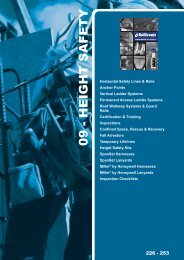SLINGS
04 - Sling S - Bullivants
04 - Sling S - Bullivants
- No tags were found...
You also want an ePaper? Increase the reach of your titles
YUMPU automatically turns print PDFs into web optimized ePapers that Google loves.
Alloy Chain Slings Grade T(80) & Grade V(100)<br />
Bullivants has been assembling and supplying chain slings for over 100 years with an outstanding record for safety. Chain slings<br />
are manufactured in accordance with Australian Standard AS3775 and AS3776 using quality lifting grade components. All slings<br />
are supplied with a WLL tag fitted.<br />
Chain slings can be made to any configuration. Variations include the number of legs, the length of the legs and the fittings<br />
attached to the master links and chain legs.<br />
The useful life of alloy chain slings is considerable, but it can easily be extended by observing the following:<br />
Care<br />
• Store chain slings on A-frames or wall racks in a clean dry place.<br />
• Lightly oil chains before prolonged storage.<br />
• Never heat treat alloy chain or fittings.<br />
Use<br />
• Always visually inspect that a chain sling is free from damage or wear before use.<br />
• Ensure the weight of the load is known and is evenly distributed on the sling legs.<br />
• Ensure that the chain is free of twists and is protected from any sharp corners on the load.<br />
• Commence the lift slowly, taking up the slack gradually. Avoid shock loads.<br />
• When lowering, avoid the possibility of crushing the chain by ensuring the load does not<br />
land on it. Use packing, timber or similar.<br />
Inspection<br />
It is important to inspect chain slings regularly and to keep a record for each sling.<br />
• Clean the chain thoroughly.<br />
• Lay the chain out on a clean surface or hang it up in a well lit area.<br />
• Every chain link should be individually inspected for any signs of wear, twisting, stretching, nicks,<br />
or gouging and any worn link measured to determine degree of wear using Vernier Calipers.<br />
• Master links and hooks should be inspected for any sign of wear at their load bearing points and<br />
for any signs of distortion, such as widening of hook throat opening.<br />
• Coupling links should be inspected for any signs of wear at their load bearing points, for excessive play<br />
of the load pin within the body halves and for impaired rotation of the body halves around the load pin.<br />
• Chain links or fittings having any defects should be clearly marked to indicate rejection and the chain sling<br />
should be withdrawn from service until properly repaired and retested prior to returning to service.<br />
• Slings that have damaged fittings may be repaired on-site by replacing the fittings (note: when reassembling coupling links<br />
it is recommended that a new pin and stud assembly be used), but must be proof tested after any modifications other than<br />
replacing safety latches that are not an integral part of a hook in accordance with AS3775.2.<br />
Remember - Every link must be examined.<br />
Chain Slings should be inspected periodically by a competent person, in accordance with AS3775.<br />
04 - <strong>SLINGS</strong><br />
WWW.BULLIVANTS.COM 81



